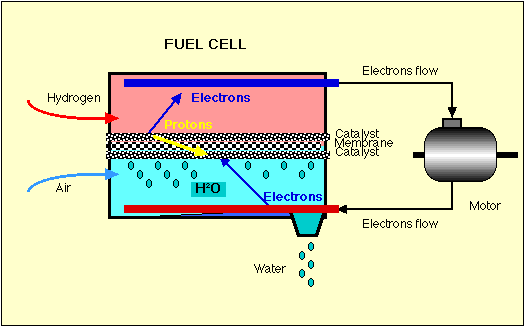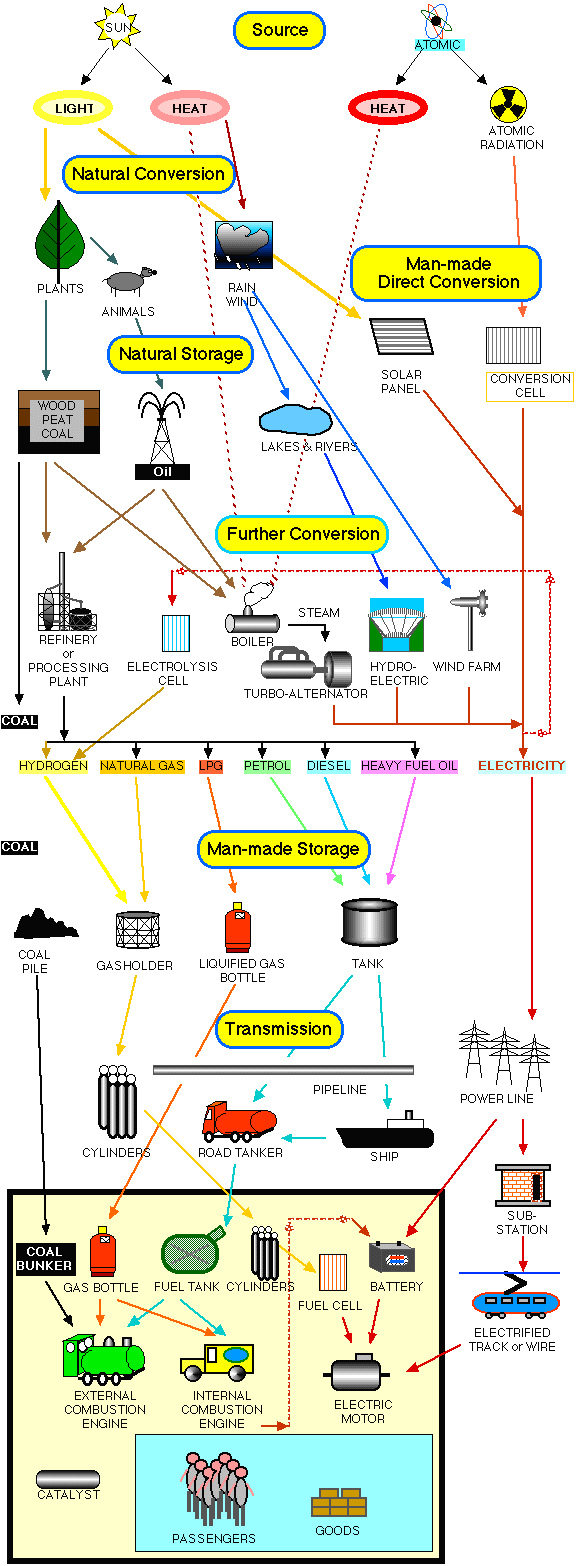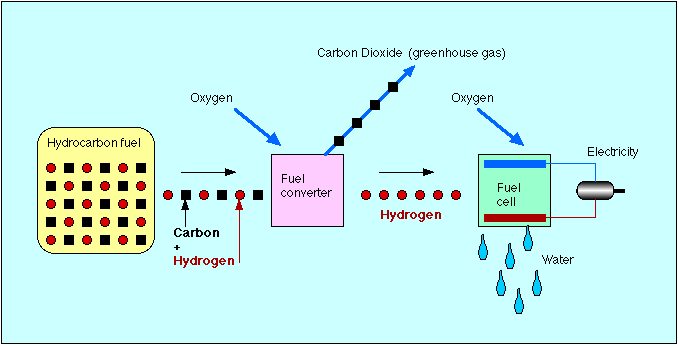
At first sight, the fuel cell seems like the answer to most, if not all of the present day vehicular pollution problems.
In its simplest form, it consists of a box divided into two compartments separated by a special membrane. Hydrogen is introduced on one side of the membrane and oxygen, or more usually air, on the other. On the surfaces of the membrane are layers of Catalyst. The Hydrogen is split by one of the catalysts into Protons and Electrons.
The Electrons are captured by an electrode which becomed electrically charged. From this electrode, a current of electrons flows through an external electrical device, such as a motor, and back to the other side of the fuel cell.
The Protons pass through the membrane into the other Catalyst layer where they react with the oxygen in the air to give water, simultaneously mopping up the returning electrons.

A useful electric current can be drawn because of the excess of electons on one side of the cell and the deficiency (due to mopping up) on the other. The inputs are Hydrogen and Air and the output is water. The fuel cell appears to be virtually pollution-free.
Manufacturing and disposing of fuel cell memranes and catalysts will create some pollution, but it is only when the supply chain of the Hydrogen is considered that the true environmental cost of operating a fuel cell becomes apparent.
HYDROGEN SUPPLY CHAIN
Hydrogen can be obtained from a petrochemical process in much the same way as petrol, pollution is generated in its manufacturing process and large amounts of energy are used. Hydrogen can also be generated from electricity by electrolysis, but the generation of electricity requires energy and significant proportion of this is wasted in an electrolysis cell. It is far more efficient to take the electricity straight to the vehicle by means of an overhead wire.
The energy pathways for many fuels can be seen from this diagram:

OTHER FUELS
A number of fuel cells now exist which claim to work on other fuels than pure Hydrogen. On closer examination they turn out to be a hydrogen fuel cell with an attached (or included) conversion system to allow the hydrogen component of some other fuel to be used. The other fuel is normally gas or oil, either derived from petroleum or from biomass.

All these fuels are compounds of hydrogen and carbon; so when the hydrogen is used in a fuel cell, there is the problem of disposing of the remaining carbon component. This is usually emitted as carbon dioxide from the fuel converter, which defeats one of the major advantages of the fuel cell - its total lack of CO2 emissions.
Furthermore, a conventionally-fuelled engine derives a considerable amount of its energy from the carbon content of the fuel, whereas carbon is an embarrasment to the fuel cell conversion process.